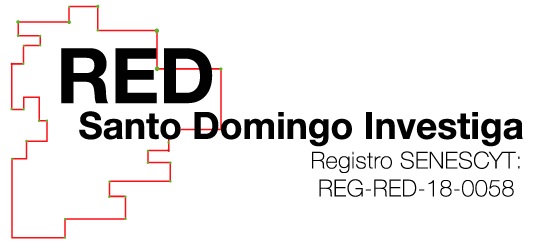The Milkkifers
The Milkkifers
Boris Torres
Esta dirección de correo electrónico está protegida contra spambots. Necesita activar JavaScript para visualizarla.
Universidad de las Fuerzas Armadas
Paulina Zambrano
Esta dirección de correo electrónico está protegida contra spambots. Necesita activar JavaScript para visualizarla.
Universidad de las Fuerzas Armadas
Jodan Tobar
Esta dirección de correo electrónico está protegida contra spambots. Necesita activar JavaScript para visualizarla.
Universidad de las Fuerzas Armadas
Resumen
La bacteria Lactobacillus bulgaricus es aquella que actúa como cultivo iniciador en el proceso de fermentación en la lactosa, de la cual se obtiene derivados, uno de ellos es el yogurt, considerado como prebiótico debido a sus niveles para regenerar la flora intestinal, ya que estas bacterias ayudan a facilitar la descomposición de la enzima lactosa en el intestino y pueden ayudar en la digestión en base ya lo mencionado más adelante en el documento. Lactobacillus Bulgaricus, nombre común con el que se conoce a las colonias de las bacterias Lactobacillus bulgaricus, las cuales son conglomerados de bacterias lácticas y levaduras de asociación simbiótica estable embebidas en una matriz de polisacáridos, cuyo tamaño varía de entre 5mm y 2.5 mm; de consistencia elástica y de color blanco-amarillento Se tiene como objetivo comparar las propiedades organolépticas entre el yogurt comercial y el yogurt casero hecho con Lactobacillus bulgaricus. Por lo , que para el realiza miento del yogurt contamos con los siguientes materiales y métodos de los cuales principalmente se usó leche con los Lactobacillus almacenándolos durante 24 horas, una vez transcurrido este tiempo se puede observar que ya se ha generado yogurt, de tal manera que se pudo añadir otros componentes para mejorar su sabor como el endulzante y la fruta , obtenido como resultado que el yogurt comercial tiene una ventaja en propiedades organolépticas por ser comercial, por otra parte el yogurt hogareño tiene predilección en sabor y textura, utilización de Agua hervida enfriada, Envase de cristal, Leche, Colador, búlgaros o milkkifers, Fruta y endulzante. por los ingredientes que lo originan ,instruyéndose así que el yogurt comercial por su refinamiento tiene cierta predilección por los encuestados debido a que este tiene un mayor tratamiento, el cual mejora sus propiedades estéticas haciéndolo de mejor gusto que el natural , llegando a la conclusión que en cuestiones organolépticas la gente prefiere el yogurt comercial, sobre el hogareño por su presentación más estética. que los búlgaros cuando estos generan yogurt le aportan ciertas características que benefician al ser humano, por lo que las personas encuestadas tienen mayor preferencia en cuanto a un yogur casero, ya que este presenta un tratamiento menos artificial, por otro lado, si este fuese producido industrialmente tendría mayor aceptación organoléptica.
Palabras claves: yogurt, probiótico, leche, Lactobacillus bulgaricus, natural
Abstract
The bacterium Lactobacillus bulgaricus is one that acts as an initiator crop in the process of fermentation in lactose, from which you get derivatives, one of them is yogurt, considered as prebiotic because of its levels to regenerate the intestinal flora, and That these bacteria help to facilitate the decomposition of the enzyme lactose in the intestine and can help in the digestion on the basis already mentioned later in the document. Lactobacillus Bulgaricus, common name with which the colonies of the bacteria Lactobacillus Bulgaricus are known, which are conglomerates of lactic bacteria and yeasts of symbiotic association stable embedded in a matrix of polysaccharides, whose size varies between 5mm and 2.5 mm; of elastic consistency and white-yellowish color is aimed to compare the organoleptic properties between commercial yogurt and homemade yogurt made with Lactobacillus bulgaricus. Therefore, for the realization of the yogurt we have the following materials and methods of which mainly milk was used with Lactobacillus stored for 24 hours, after this time can be seen that has already generated yogurt, In such a way that other components could be added to improve their flavor as the sweetener and the fruit, obtained as a result that commercial yogurt has an advantage in organoleptic properties because it is commercial, on the other hand the home yogurt has predilection In flavor and texture, use of chilled boiled water, glass container, milk, sieve, Bulgarian or milkkifers, fruit and sweetener. By the ingredients that originate it, Instruyéndose so that the commercial yogurt by its refinement has some predilection for the respondents because this one has a greater treatment, which improves its aesthetic properties making it of better taste than the Natural, reaching the conclusion that in organoleptic matters people prefer commercial yogurt, on the homey for its more aesthetic presentation. That the Bulgarians when they generate yogurt provide certain characteristics that benefit the human being, so the respondents have a higher preference for homemade yogurt, because it presents a less artificial treatment, on the other hand, if This was industrially produced would have greater organoleptic acceptance.
Keywords: yogurt, probiotic, milk, Lactobacillus bulgaricus, natural

















